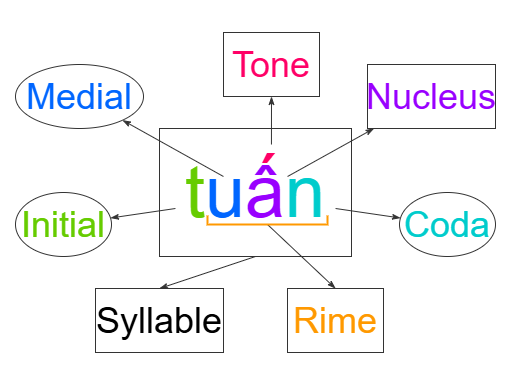A syllable consists of three parts:
- An initial (or initial consonant), or phụ âm đầu
- A final (or rime), or vần
- A tone, or thanh điệu
The initial is optional, whereas the rime and tone are mandatory. The rime can further be broken down into three smaller parts:
- A medial, or âm đệm (lit. “padding sound”)
- A nucleus (or main vowel), or âm chính
- A coda (or final consonant), or phụ âm cuối
The medial and coda are optional, whereas the nucleus is mandatory.

For the sake of simplicity and consistency, we will use the more layman-friendly terms, which are initial consonant, rime, tone, medial, main vowel, and final consonant, to refer to the components.